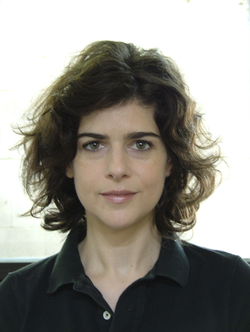TCU gallery director interviewed on National Public Radio
 |
Fort Worth, TX
2/23/2010
Christina Rees, director of The Art Galleries at TCU, was co-curator with Thomas Feulmer of "Modern Ruin," a two-day exhibition held Feb. 20-21 in an abandoned bank building on Greenville Avenue in Dallas. The event attracted several hundred enthusiasts to view the work of 15 artists who used the building itself as their inspiration. The building (and the art installations) are scheduled to be demolished this week.
Kai Rysdall of National Public Radio was on the scene Sunday and interviewed Rees about the unique project. It aired nationwide Monday night, Feb. 22, on NPR’s “Marketplace.”
To summarize the back story, on Sept. 25, 2008 the United States Government took over Washington Mutual, selling most of it to JPMorgan Chase.
Roughly a year earlier, at the height of a frenzied economic bubble, Washington Mutual had begun construction of a $1 million dollar Dallas branch at 5030 Greenville Avenue, just south of Lovers Lane. Just after its completion, the government seized WaMu, and JPMorgan Chase decided not to occupy the building. Therefore, the facility was never opened, never used, and has sat as an empty shell for more than a year.
The bank building is truly a modern ruin - a building that never met its purpose, and only existed as potential activity, potential economy, and hoped-for growth. The weekend exhibition will have been its only use.Participating artists were Frances Bagley, Tim Best, Michael Corris, Thomas Feulmer, Annette Lawrence, M Margaret Meehan, Tom Orr, Richard Patterson, Cam Schoepp, Noah Simblist, Christoph Trendel, Terri Thornton, Kevin Todora and Jeff Zilm.
They sought to take advantage of the space — its social and cultural connotations, its materials, and its presence as direct and immediate evidence of the current economic condition —to create work inspired by and in dialogue with the building. Some artists altered the building's materials and corporate interior, while others staged actions and interventions within, and still others used the background of the space as context for their work.










